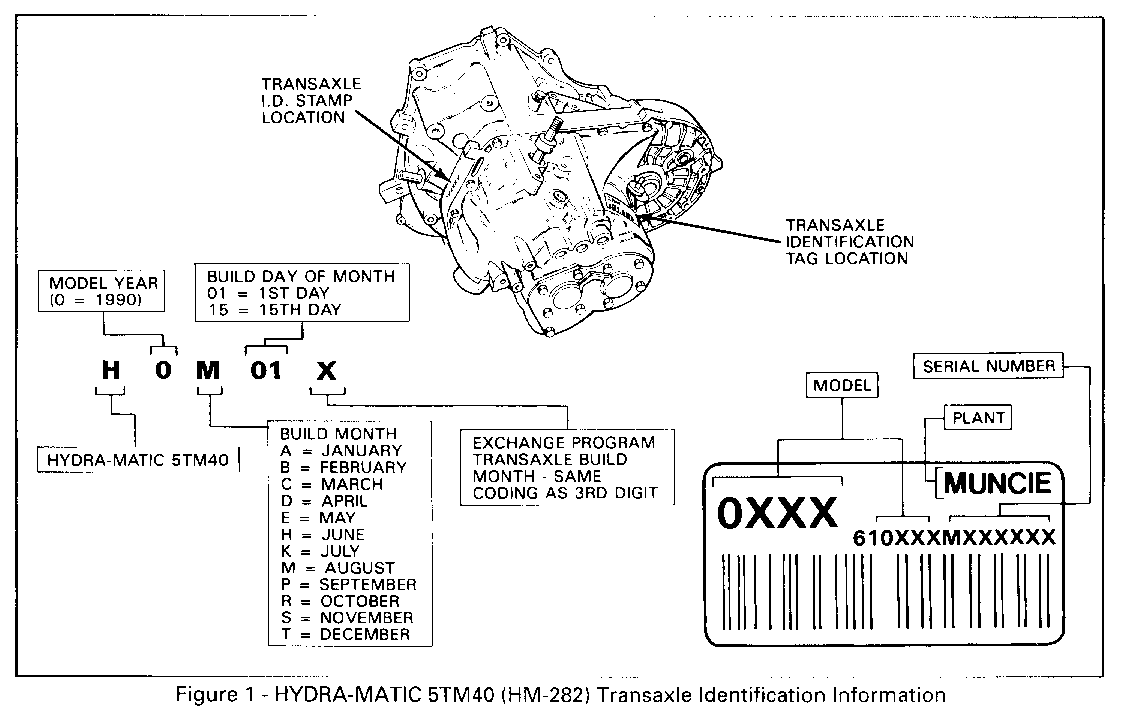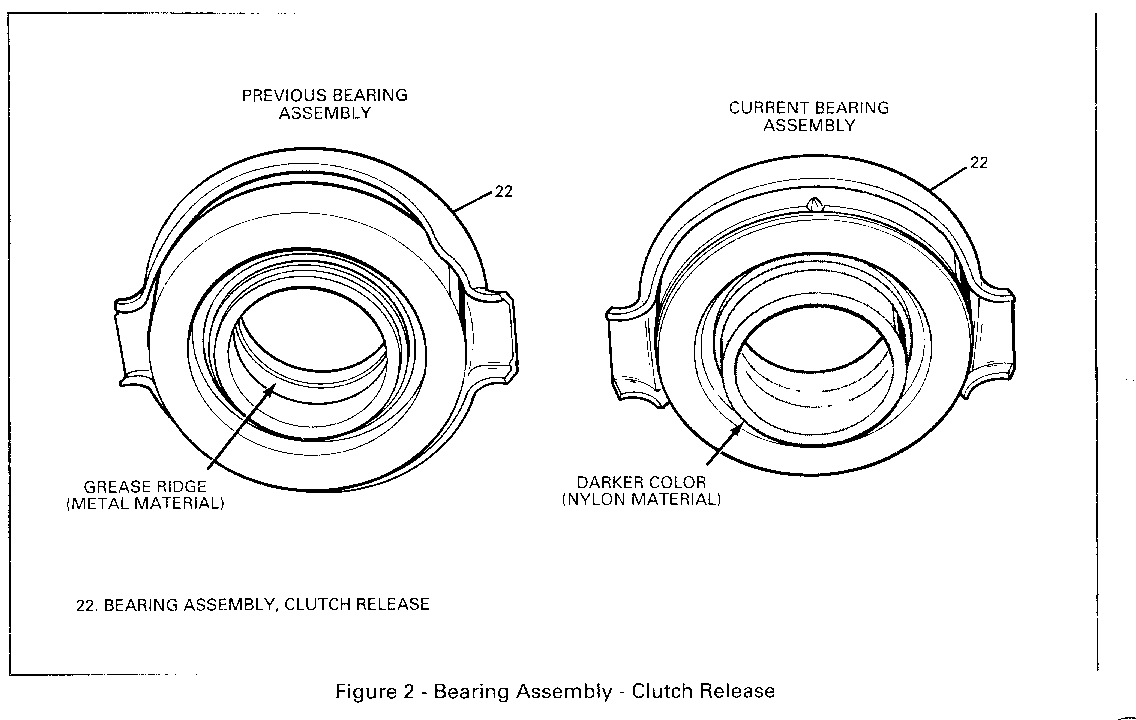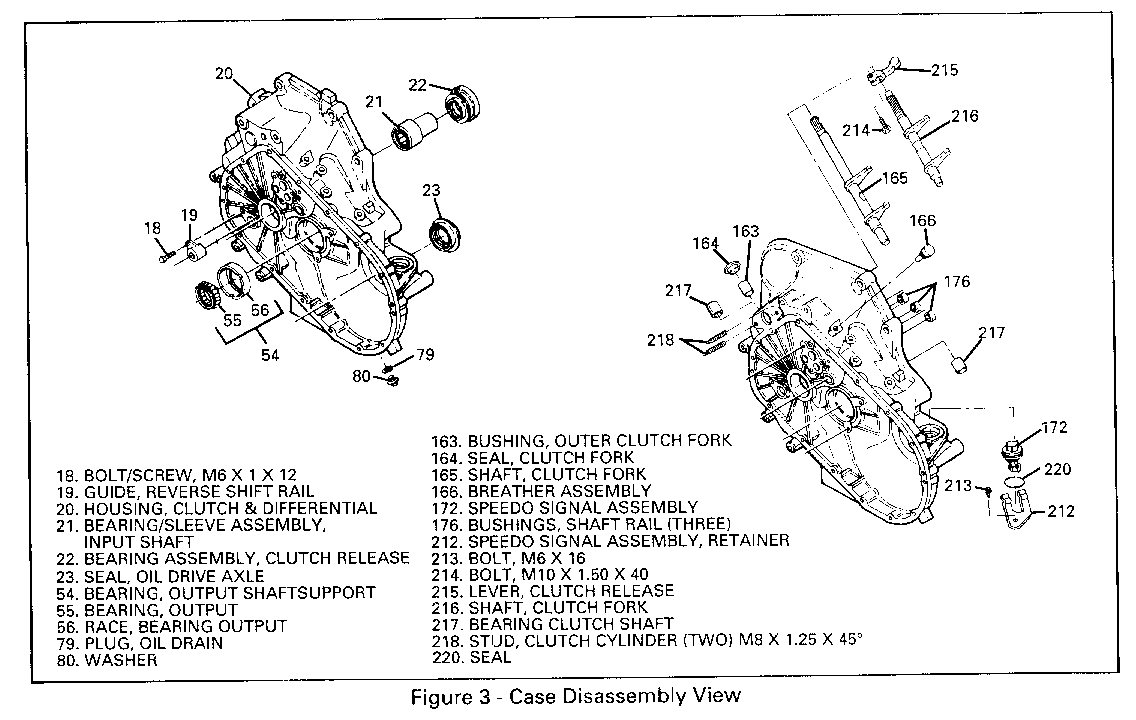HIGH CLUTCH PEDAL EFFORT & SHIFT EFFORT OR GEAR CLASH

Bulletin Covers:
CONDITION:
Owners of some of the above vehicles equipped with a HM282 5-spd manual transaxles, refer to Figure 1 may comment about high clutch pedal effort accompanied with high shift effort or gear clash.
CAUSE:
The above conditions may be due to galling or heavy scoring between the release bearing and input shaft sleeve/bearing assembly. However, any of the following could also be contributing to the condition, therefore; in order to fully determine the cause of the concern each of the following should be inspected.
1. Clutch pedal and associated hydraulic system for binding or loose fasteners.
2. Galling or heavy scoring on the inner diameter of the release bearing or outer sleeve diameter of the input shaft bearing/ sleeve assembly.
3. Clutch fork shaft for freedom of movement in its bushings/needle bearings.
4. Clutch fork shaft for misalignment to the release bearing or input shaft bearing/sleeve assembly.
5. Clutch wear.
CORRECTION:
1. Inspect the clutch system linkage external to the clutch housing for binding or looseness and replace or tighten as required.
2. Reference Figure 3.
Inspect the sliding contact areas between the release bearing and input shaft bearing/sleeve assembly. Also inspect the release bearing pads (fort contact points) for wear or bending. Use solvent to clean the parts.
If the sliding contact areas are heavily scored, grooved or galled or if the release bearing pads are bent or heavily worn; then the release bearing and input shaft bearing/sleeve assembly should be replaced. A new release bearing with a nylon lined inner diameter as shown in Figure 2 and a new input shaft sleeve/bearing assembly with a different surface finish are available. Installing a new release bearing on a damaged input shaft sleeve/bearing assembly will result in only a temporary repair for the customer.
Removal and replacement of the input shaft bearing/sleeve assembly should be performed per Service Manual 7B1 (Unit Subassembly Repair and Inspection) using Kent-Moore service tool J-35824. When pressing the old bearing out and the new one in take special care to ensure that no bearing "cocking" occurs.
Bearing "cocking" may very well result in bearing pocket damage, clutch housing cracking, or premature bearing wear. If the tool is not available, or there was any damage to the clutch housing while pressing the bearing in or out, a new housing should be used.
3. Make sure the fork shaft rotates freely in its bushings and ensure that it contacts the bearing squarely. Signs of galling or scoring along one side of the sleeve/bearing assembly is a good indicator of misalignment. Also inspect the clutch fork tips for excessive wear.
If the shaft does not rotate freely, has excessive fork tip wear, or misalignment is apparent; then the fork shaft, bushings and seal should be replaced.
4. Inspect the clutch pressure plate and disc assembly for excessive wear based on the vehicles mileage. It is normal to expect pedal efforts to increase with mileage accumulation. However, it is not notmal to encounter very high pedal efforts with a slightly worn clutch, this would definitely indiate another problem in the clutch system.
If the clutch assembly does show more wear than normal it should be replaced, but it is also very important to inspect and repair the rest of the system.
IMPORTANT: During reaseembly make sure contact areas (i.e.sleeve, inner diameter of bearing, and fork contact pads on bearing) are cleaned and lubricated with high temperature grease.
Excess grease can cause clutch durability concerns.
SERVICE PARTS:
PART NAME PART NUMBER --------- ----------- Bearing Assembly, Clutch Release 8672339 Bearing/Sleeve Assembly, Input Shaft 8672128 Kent-Moore Bearing Removal Tool J-35824



General Motors bulletins are intended for use by professional technicians, not a "do-it-yourselfer". They are written to inform those technicians of conditions that may occur on some vehicles, or to provide information that could assist in the proper service of a vehicle. Properly trained technicians have the equipment, tools, safety instructions and know-how to do a job properly and safely. If a condition is described, do not assume that the bulletin applies to your vehicle, or that your vehicle will have that condition. See a General Motors dealer servicing your brand of General Motors vehicle for information on whether your vehicle may benefit from the information.
